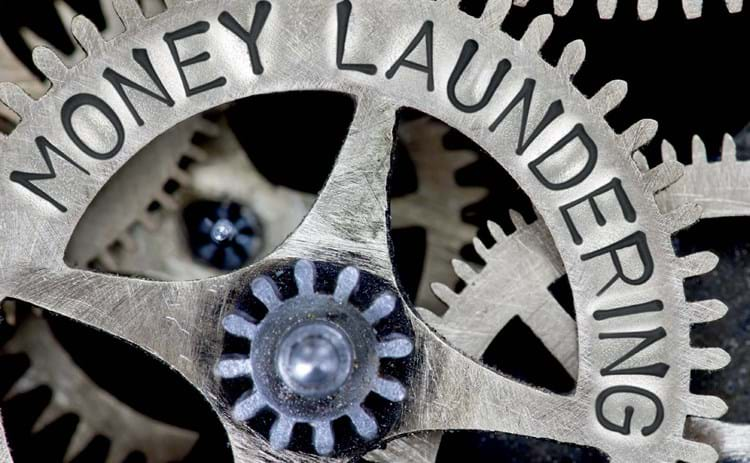
HMRC has published the guidance for the art market implementation of the Money Laundering, Terrorist Financing and Transfer of Funds (Information on the Payer) Regulations 2017, which came into effect for the art market from January 10.
While the general view of participants may be that the majority of transactions in this market are ‘low risk’ for money laundering purposes, the 2017 Regulations nevertheless introduce significant obligations for art market participants.
Implementation challenge
However, the regulations were not written for the art market and implementation will be challenging at times, hence why reading and following the recently published guidance is vital.
Officially entitled the British Art Market Federation [BAMF] Guidance on Anti-Money Laundering for UK Art Market Participants – Approved by HM Treasury, the guidance reflects nearly a year’s drafting and discussion between members of BAMF and officials from the Treasury and HMRC, and effectively represents the Treasury’s and HMRC’s view on how the 2017 Regulations should be applied by and to the art market.
Those hoping for a quick ‘ready reckoner’ for the implementation of the 2017 Regulations may be in for a slight surprise: at 109 pages the guidance is a substantial document, combining a (relatively) brief introduction to implementation of the 2017 Regulations in the art market, with a longer and more detailed review of many aspects of the new provisions.
While it is not mandatory to follow the guidance (the 2017 Regulations remain ‘the law’ on the subject), it will be an important reference point for art market participants as, under Regulation 86, whether a party has followed the guidance must be taken into account by the courts should a dispute arise in relation to that party’s implementation of the 2017 Regulations.
As required by HM Treasury, the guidance closely follows the form of previously issued documents for other sectors governed by the 2017 regulations. At 70 paragraphs over 15 pages, the ‘Introduction’ actually provides a detailed summary of the issues covered by the 2017 Regulations in the context of the art market.
Part II contains a more detailed section devoted to each of the principal areas, namely: Risk Based Approach, Nominated Officer, Required Anti- Money Laundering (AML) Policies, Required Training, Customer Due Diligence, Suspicious Activity Reports, and Required Record Keeping. There is also a glossary and a summary of relevant legislation.
Important new reference point
So, while the 2017 regulations comprise the applicable law, their original focus was on the markets for financial institutions and so on, whereas this new guidance document provides an important reference point for a range of art market issues not expressly covered previously.
The text also underlines that the Proceeds of Crime Act 2002 (POCA) and the Sanctions regime continue to apply to all those involved in the art market, whether or not they fall within the 2017 Regulations.
The 2017 Regulations apply to an Art Market Participant (or AMP) – see box on facing page – who is involved in trading in ‘works of art’.
AMPs are bound by the 2017 regulations from January 10, 2020, and are required to register with HMRC before January 10, 2021. After that date it will be unlawful to carry out transactions falling within the 2017 regulations until registered for the purpose with HMRC (although transactions carried out while the registration process is under way will be lawful so long as the other requirements of the 2017 regulations are being satisfied).
Dealers and auctioneers will be familiar with the definition of ‘Works of Art’ because it has adopted the existing definition in s21 of the Value Added Tax Act 1994 – broadly paintings, drawings, limited edition prints and sculptures, tapestries, signed photographs and ceramics, and excluding categories such as furniture, unsigned ceramics, jewellery and collectors’ items such as coins, medals and stamps.
This effectively means that while some dealers who exclusively handle the excluded items remain outside the 2017 Regulations (but still subject to POCA), many dealers, auction houses and intermediaries will be handling both AML-regulated and non-regulated goods, which will require careful thought when rolling out appropriate procedures for their businesses.
Price threshold is all-inclusive
The €10,000 threshold for items to be within the scope of the 2017 Regulations includes all commissions and taxes on the transaction, so the actual threshold (in terms of hammer or sale price) will be lower in practice.
Guidance is also provided as to whether different transactions are to be seen as ‘linked’ for threshold purposes and what to do if an unregistered dealer or auctioneer unexpectedly sells (say) a painting for more than the €10,000 threshold.
The Risk Assessment and Nominated Officer
The 2017 regulations require a risk-based approach to combating money laundering and terrorist financing, and the first, key, step for an AMP will be to conduct a Risk Assessment of the potential money laundering risks in their business.
Each assessment will be peculiar to its underlying business and no two are likely to be the same, with the approach and terms of assessment set out in section 1 of Part II of the guidance. This assessment is not simply a legal requirement, but will also underpin the business’ approach to AML policies, procedures and training.
By identifying areas of low, medium or high risk in their business by reference to the guidance, AMPs can try to ensure that their AML policies and procedures are adequate and relevant without being excessive and overly burdensome for their particular business. The Risk Assessment is therefore both a duty and an opportunity.
The guidance (part II section 2) addresses the need to appoint a Nominated Officer with responsibility for monitoring compliance, processes and training.
The guidance sets out the requirements for this Nominated Officer, who broadly must be of sufficient seniority to influence commercial conduct and the business’s decision-making in AML-related matters, and will manage the internal and external reporting procedures for the business (see Suspicious Activity Reports below). For single-person or small businesses, the owner/ manager will probably be the Nominated Officer.
Sections 3 and 4 of part II of the guidance cover policies and staff training, including the matters to be covered, the need for regular updates and retention of both formal policies and personnel training records, all of which can be called for inspection by HMRC. Key measures will be whether policies and training respond to issues raised in the Risk Assessment, reiterating the need to have a relevant and balanced risk assessment in the first place.
Find the guidance online here: https://atg.news/AMLguide
Due diligence
The largest section of the guidance addresses Customer Due Diligence (CDD), as this is an area where the 2017 Regulations are perhaps most difficult to relate to the art market.
The 2017 Regulations require AMPs to carry out CDD on their customers.
The fundamental question is always ‘with whom am I really dealing?’. Section 5.5 provides a very precise definition of ‘customer’ in the art market context (see box above), which will be helpful in applying the 2017 Regulations to the art market.
The key is to focus on the source of funds for the transaction. This will mean verifying the identity of the buyer, and where the buyer is acting through an agent, verifying the identity of the agent and the buyer (and for companies and trusts, the ultimate beneficial owner).
The guidance only requires verification of the seller where funds are being transmitted for a service (although existing obligations under POCA still apply).
In an auction context, therefore, the regulated auctioneer would have to conduct CDD into the buyer (and buyer’s agent) and into the seller (and seller’s agent), because the auctioneer is providing a service and/or receiving financial value from both parties.
However, section 5.5 and the examples given in the guidance clarify that the auction house and its seller are not deemed a ‘customer’ of the buyer under the 2017 Regulations and so would not trigger CDD obligations on the buyer (although the buyer would still have its long-standing due diligence obligations under POCA and the Sanctions regime). The same principle applies to transactions between dealers, as reiterated by section 5.8 of the Guidance and the worked examples for dealers and auctioneers set out in section 5.19.
Section 5 of the guidance addresses when one regulated entity can rely on another for CDD into a customer. However, because such ‘Reliance’ under the Regulations requires (section 5.202) disclosure of the ultimate customer’s name and the precise CDD undertaken, to the relying party who also remains liable for any defects in the CDD undertaken by the investigating party, it may be that formal ‘Reliance’ is rarely used – but this will be for individual businesses to decide.
Section 5 also contains lengthy guidance on CDD issues concerning trusts, partnerships and companies, dealing with Politically Exposed Persons (PEPs) and identifying red flags and customers or transactions deemed to be ‘higher risk” and requiring enhanced CDD.
The timing for CDD is clarified so that in art market transactions, CDD must be completed before concluding the transaction, namely releasing the property or funds. This will be particularly important in auction and art fair contexts, where potential buyers may frequently not appear until the last minute and full checks may not be feasible prior to accepting the initial bid or offer.
Art Market Participant means:
A firm or sole practitioner who
(i) by way of business trades in, or acts as an intermediary in the sale and purchase of, works of art and the value of the transaction, or a series of linked transactions, amounts to €10,000 or more; or
(ii) is the operator of a freeport when it, or any other firm or sole practitioner, by way of business stores works of art in the freeport and the value of the works of art so stored for a person, or a series of linked persons, amounts to €10,000 or more.
Customer means:
The ‘customer’ for the purposes of the regulations will vary, depending on the AMP’s business model. It will be the purchaser of a work of art, and any broker or agent acting for them. It will be the seller, where the AMP provides a service to, and receives financial value from, them.
Suspicious activity and record keeping
Section 6 of the guidance covers the instances where a Suspicious Activity Report might be required (within the organisation and potentially to the authorities).
While these instances might be few in practice, the guidance reiterates the importance for all staff to know what to look for in terms of forged documents and other suspicious circumstances, and assists the Nominated Officer in determining whether or not a suspicious activity report to the authorities is necessary (and all staff should be aware of the ‘tipping off’ offence concerning the secrecy of such reports).
The final section of the guidance addresses record keeping, setting out what information has to be kept securely, in what form and for how long (generally five years from the relevant transaction). The 2017 Regulations specifically underline the importance of secure information storage under the General Data Protection Regulation, as well as HMRC’s right to inspect all AML-related records kept by the AMP.
Substantial and complex
The BAMF-HM Treasury Guidance supports the 2017 Regulations and is not a substitute for legal advice for individual cases; and, at 109 pages it is no ‘ready reckoner’ but a substantial and complex document which will require careful consideration. It nevertheless provides a comprehensive reference and a more practical basis for moving forward in the art market than could be provided in the regulations themselves.
Doubtless other issues will arise as the market adapts to the new regulations, and hopefully BAMF, HMRC and the Treasury will be able to keep the guidance under review so that it can respond to further questions that are likely to arise in practice.

Art market lawyer Tom Christopherson, one of the BAMF team reviewing the new anti-money laundering guidance.
Tom Christopherson is a solicitor, a member of the BAMF and SOFAA Committees, was previously European General Counsel at Sotheby’s and is currently a consultant to Bonhams and the Sotheby’s Institute of Art. He worked on the BAMF team reviewing the guidance with the Treasury and HMRC.
Next week: more on anti-money laundering including an update for auction houses from thesaleroom.com.













